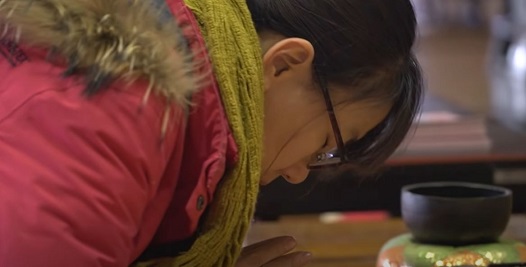1. A passage from the Samguk yusa
Here is a passage from the Samguk yusa (三國遺事), compiled in 1281 C.E. by the monk Iryeon (一然). Note that the word 祈禱 (“kido” 기도) is used to mean “pray” in the very specific sense of praying to someone for something:
羅季天成中, 正甫崔殷諴, 久無胤息, 詣玆寺大慈前祈禱.
羅季天成中,
羅 = Silla (short for 新羅)
季 = end of
天成 = Tiancheng (this refers to the time from 926 to 929/930 CE)
中 = while, during
,
正甫崔殷諴,
正甫 = Jeongbo
崔殷諴 = Choe Eunham
,
久無胤息,
久 = long time
無 = no, without
胤息 = sons
,
詣玆寺大慈前祈禱.
詣 = to go
玆 = “this, here; thus, therefore, now. Commonly seen mixed up with 茲 and 兹. [Charles Muller]” {DDB}
寺 = temple, shrine, place of worship
大慈 = Dae Jah, an epithet of Kwan Seum Bosal/Avalokitesvara
前 = before, in front of
祈禱 = pray
translation: “During the ending [years] of the Silla in the Tiancheng era, Jeongbo Choe Eunham for a long time [had] no sons. So he went before the shrine of Kwan Seum Bosal (大慈) and prayed (祈禱).”
Of course Kwan Seum Bosal answered his prayers, and his wife was soon pregnant!
This passage is found in volume 10 of the online edition of “The Collected Works of Korean Buddhism”, in the section on “Three Places with Images of Avalokiteśvara: I. Jungsaengsa 三所觀音 I. 衆生寺”.
http://ibdigital.uib.es/greenstone/sites/bdeo/collect/worksKoreanBuddhism/index/assoc/Collecte/d_Works_/Korean_B/uddhism_/v10.dir/Collected_Works_Korean_Buddhism_v10.pdf
2. Let’s look it up
If one looks up 祈禱 in the online Digital Dictionary of Buddhism, the definition found there is very straightforward. 祈禱 means “to pray … especially for the avoidance of calamaties.”
But don’t take my word for it, you can look it up yourself!
http://www.buddhism-dict.net/ddb/
Note that there is no DDB entry for 氣道.
3. What about in Japanese?
Romaji: Kitō
Hiragana: きとう
Kanji: 祈禱 or 祈祷
Check out this online version of the “Standard Observances of the Soto Zen SchooVolume 2: Introduction, Glossaries, and Index” by T. Griffith Foulk, wherein one will find at least seven references to kitō/祈禱:
https://terebess.hu/zen/mesterek/Sotoshu-Gyoji-Kihan-vol2.pdf
And also there is this thesis available online by Tim Graf titled “Brands of Zen: Kitō jiin in Contemporary Japanese Sōtō Zen Buddhism”:
https://archiv.ub.uni-heidelberg.de/volltextserver/23728/1/Dissertation%20Tim%20Graf.pdf
4. But what about “energy way”??
One sometimes hears that “kido” means “energy way”. This is based on the assumption that the corresponding Hanja is 氣道 (which is also pronounced as 기도/”ki-do” in Korean). But the actual Hanja for 기도 is clearly 祈禱.
I think it is very probable that the “energy way” explanation of “kido” came about due to (1) the distaste of many western Buddhists for words like “pray” and “worship”, combined with (2) the fact that 氣 (chi = “energy”) and 道 (tao = “The Way”) are already familiar to westerners and have the same pronunciation, and (3) the fact that “energy way” actually corresponds quite well with the way people experience “kido” when they do it.
氣道 is a legitimate word in Chinese (and Korean and Japanese). It means “airway”.
If you do an image search on 祈禱 (like this) you get pictures of people praying. On the other hand, if you do an image search on 氣道 (like this) you get pictures of people doing Aikido (合氣道) interspersed with anatomical drawings of the lungs, trachea, etc.
5. Does it matter?
It’s important to remember that “ignorance” in Buddhism does not simply mean a lack of understanding. It means mistaken understanding – that is, thinking you know what something means, when it actually means something else. This Buddhist view of ignorance is emphatically not nihilistic. Buddhists do not believe that there is no meaning, or that there is no use in understanding things. The Buddha taught that all suffering begins with ignorance.
Finally, you cannot do proper “kido” chanting without a moktak or two (or more!). Here is a video about some Buddhists in Taiwan who make “wooden fish” (aka moktaks, mogykos, etc):
